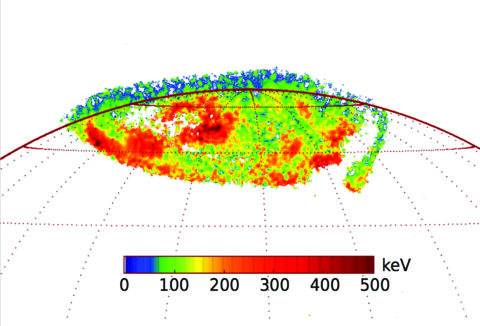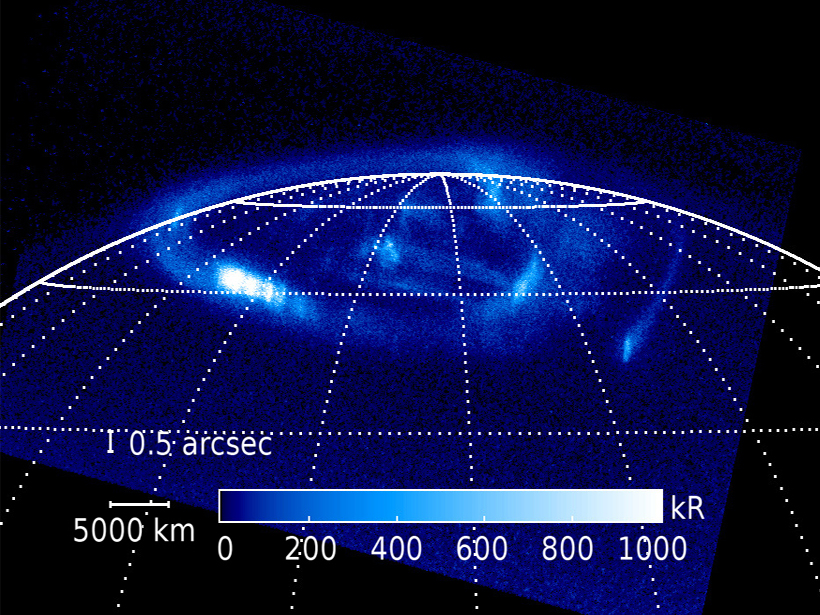Source: Journal of Geophysical Research: Space Physics
Earth is not the only planet with beautiful aurora displays—Jupiter boasts some of the most powerful in the solar system. Unlike Earth’s, which emit mostly in the visible spectrum, Jupiter’s aurora is mostly in the ultraviolet (UV) part of the spectrum. Over the past 2 decades, NASA’s Hubble Space Telescope has returned some awesome images of the shimmering curtains around the poles of the gas giant. Like Earth’s aurora, Jupiter’s is caused by showers of energetic particles that rain down on the upper atmosphere, exciting atoms and causing them to glow.
Now Gérard et al. have gone one step further, using Hubble to measure just how energetic these incoming particles, which in Jupiter’s case are mostly electrons, can be. They used one of Hubble’s spectrographs, an instrument that measures the spectrum of light—as if shining it though a prism and capturing the resulting rainbow. The methane in Jupiter’s atmosphere absorbs only the most energetic UV light, leaving longer wavelengths untouched. The most energetic incoming electrons penetrate the deepest into Jupiter’s atmosphere, producing a UV glow closer to the surface. Because this light must travel through more of the atmosphere on its return to space, more of it is absorbed before it reaches Hubble’s spectrograph.

To map where the more energetic electrons were, the team used an elegant method: panning Hubble’s eye across the disk of Jupiter at a constant rate and using a special mode of the instrument that tags every bit of light it detects with a time stamp, so that they could later reconstruct what bit of light came from which part of Jupiter.
The new maps could provide insight into one of Jupiter’s most enduring mysteries—why its upper atmosphere is so hot. Decades of measurements show that Jupiter’s atmosphere contains much more heat than would be expected if its only source of energy were incoming sunlight. The aurora may play a role in this extra heating. The amount of energy the electrons deposit in the upper atmosphere is enormous, on the order of 10 terawatts, the equivalent of about 10,000 nuclear reactors—much greater than the amount of energy that Jupiter absorbs from the Sun. Understanding where the aurora-inducing electrons are depositing the most heat is crucial to helping scientists unravel how these electrons might be affecting the overall balance of heat in Jupiter’s atmosphere. (Journal of Geophysical Research: Space Physics, doi:10.1002/2014JA020514, 2014)
—Mark Zastrow, Freelance Writer
Citation: Zastrow, M. (2105), How powerful is Jupiter’s Aurora?, Eos, 96, doi:10.1029/2015EO034831. Published on 8 September 2015.
Text © 2015. The authors. CC BY-NC 3.0
Except where otherwise noted, images are subject to copyright. Any reuse without express permission from the copyright owner is prohibited.

